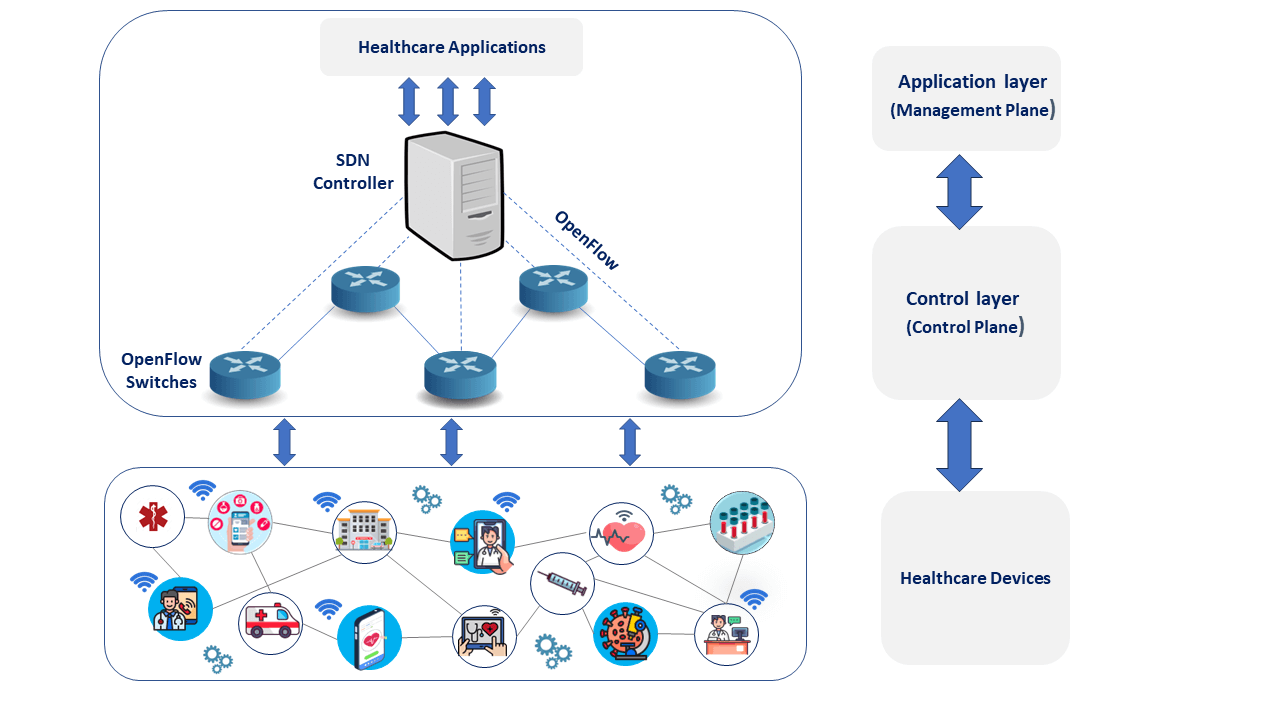 Open Access
Open Access
ARTICLE
Threshold-Based Software-Defined Networking (SDN) Solution for Healthcare Systems against Intrusion Attacks
Department of Computer Engineering, College of Computer Science, King Saud University, Riyadh, 11451, Saudi Arabia
* Corresponding Author: Mohammed J. F. Alenazi. Email:
(This article belongs to the Special Issue: Smart and Secure Solutions for Medical Industry)
Computer Modeling in Engineering & Sciences 2024, 138(2), 1469-1483. https://doi.org/10.32604/cmes.2023.028077
Received 29 November 2022; Accepted 09 June 2023; Issue published 17 November 2023
Abstract
The healthcare sector holds valuable and sensitive data. The amount of this data and the need to handle, exchange, and protect it, has been increasing at a fast pace. Due to their nature, software-defined networks (SDNs) are widely used in healthcare systems, as they ensure effective resource utilization, safety, great network management, and monitoring. In this sector, due to the value of the data, SDNs face a major challenge posed by a wide range of attacks, such as distributed denial of service (DDoS) and probe attacks. These attacks reduce network performance, causing the degradation of different key performance indicators (KPIs) or, in the worst cases, a network failure which can threaten human lives. This can be significant, especially with the current expansion of portable healthcare that supports mobile and wireless devices for what is called mobile health, or m-health. In this study, we examine the effectiveness of using SDNs for defense against DDoS, as well as their effects on different network KPIs under various scenarios. We propose a threshold-based DDoS classifier (TBDC) technique to classify DDoS attacks in healthcare SDNs, aiming to block traffic considered a hazard in the form of a DDoS attack. We then evaluate the accuracy and performance of the proposed TBDC approach. Our technique shows outstanding performance, increasing the mean throughput by 190.3%, reducing the mean delay by 95%, and reducing packet loss by 99.7% relative to normal, with DDoS attack traffic.Graphic Abstract

Keywords
Cite This Article
 Copyright © 2024 The Author(s). Published by Tech Science Press.
Copyright © 2024 The Author(s). Published by Tech Science Press.This work is licensed under a Creative Commons Attribution 4.0 International License , which permits unrestricted use, distribution, and reproduction in any medium, provided the original work is properly cited.


 Submit a Paper
Submit a Paper Propose a Special lssue
Propose a Special lssue View Full Text
View Full Text Download PDF
Download PDF Downloads
Downloads
 Citation Tools
Citation Tools
